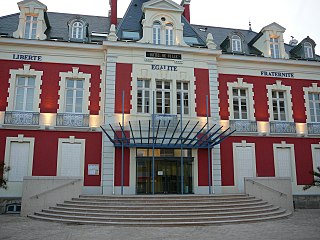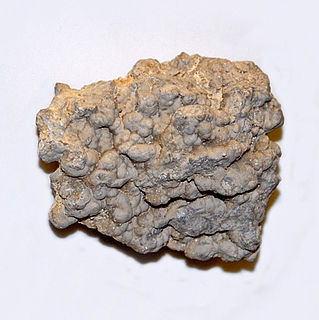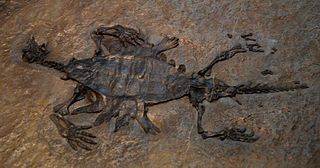| Guadalupiidae | |
|---|---|
| Scientific classification | |
| Kingdom: | Animalia |
| Phylum: | Porifera |
| Class: | Demospongiae |
| Order: | Agelasida |
| Family: | †Guadalupiidae Girty, 1909 |
Guadalupiidae is an extinct family of fossil sponges that lived from the Pennsylvanian (Carboniferous) until the Norian (Late Triassic). It includes the following taxa: [1] [2]
Family is one of the eight major hierarchical taxonomic ranks in Linnaean taxonomy; it is classified between order and genus. A family may be divided into subfamilies, which are intermediate ranks between the ranks of family and genus. The official family names are Latin in origin; however, popular names are often used: for example, walnut trees and hickory trees belong to the family Juglandaceae, but that family is commonly referred to as being the "walnut family".

Sponges, the members of the phylum Porifera, are a basal Metazoa (animal) clade as a sister of the Diploblasts. They are multicellular organisms that have bodies full of pores and channels allowing water to circulate through them, consisting of jelly-like mesohyl sandwiched between two thin layers of cells. The branch of zoology that studies sponges is known as spongiology.
The Pennsylvanian is, in the ICS geologic timescale, the younger of two subperiods of the Carboniferous Period. It lasted from roughly 323.2 million years ago to 298.9 million years ago Ma. As with most other geochronologic units, the rock beds that define the Pennsylvanian are well identified, but the exact date of the start and end are uncertain by a few hundred thousand years. The Pennsylvanian is named after the U.S. state of Pennsylvania, where the coal-productive beds of this age are widespread.
- Cystauletes R. H. King, 1943
- Cystauletes mammilosusR. H. King, 1943
- Cystothalamia Girty, 1908
- Cystothalamia megacystaFinks, 2010
- Cystothalamia noduliferaGirty, 1908
- Diecithalamia Senowbari-Daryan, 1990
- Diecithalamia polysiphonataDieci et al., 1968
- Exovasa Finks, 2010
- Exovasa cystauletoidesFinks, 2010
- Guadalupia Girty, 1908
- Guadalupia auriculaFinks, 2010
- Guadalupia cupulosaFinks, 2010
- Guadalupia digitataGirty, 1908
- Guadalupia favosaGirty, 1908
- Guadalupia leptaFinks, 2010
- Guadalupia microcameraFinks, 2010
- Guadalupia minutaRigby and Bell, 2006
- Guadalupia ramescensFinks, 2010
- Guadalupia vasaFinks, 2010
- Guadalupia williamsiR. H. King, 1943
- Guadalupia zittelianaGirty, 1908
- Incisimura Finks, 2010
- Incisimura bellaFinks, 2010
- Lemonea Senowbari-Daryan, 1990
- Lemonea conicaSenowbari-Daryan, 1990
- Lemonea cylindrica(Girty, 1908)
- Lemonea polysiphonataSenowbari-Daryan, 1990
- Lemonea simplexFinks, 2010
- "Lemonea" exaulifera(Rigby et al., 1998)
- "Lemonea" micraRigby et al., 1998
- Polyphymaspongia R. H. King, 1943
- Polyphymaspongia explanataR. H. King, 1943











